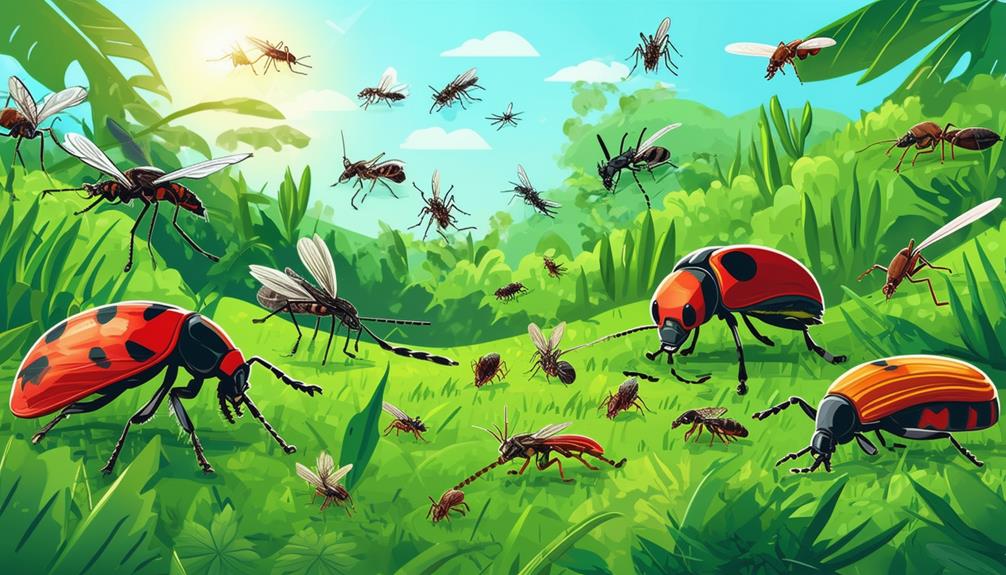This article examines the impact of Oklahoma weather on pest infestations in Tulsa. It aims to provide an informative and detailed analysis of the relationship between weather patterns and pest activity in the region.
The article begins by identifying common pests in Tulsa and their prevalence. It then explores the correlation between temperature and pest behavior, highlighting the influence of heat and cold on pest activity.
Furthermore, the role of humidity in pest infestations is discussed, emphasizing its significance in creating favorable conditions for pests. The article also examines the effects of severe weather events on pest behavior, such as storms and floods.
Additionally, preventative measures for pest control are presented, outlining effective strategies for managing and preventing infestations. By understanding the impact of Oklahoma weather on pest infestations, readers can gain valuable insights into mitigating and addressing these issues in a manner that serves the community.
Key Takeaways
- Pest infestations in Tulsa vary by season and weather conditions.
- Temperature fluctuations significantly influence pest activity.
- High humidity creates favorable conditions for pests to survive and reproduce.
- Severe weather events can disrupt pest habitats and behavior.
Common Pests in Tulsa
A variety of pests commonly infest Tulsa, posing potential challenges to residents and businesses in the area. Pest species in Tulsa include ants, mosquitoes, cockroaches, termites, and rodents. These pests can cause damage to homes and structures, transmit diseases, and create unsanitary environments.
Types of pest infestations in Tulsa vary depending on the season and weather conditions. For example, mosquitoes are more prevalent during warmer months, while rodents may seek shelter indoors during colder months.
Common pest management methods in Tulsa include chemical treatments, trapping, and exclusion techniques. Factors contributing to pest infestations in Tulsa include the region’s humid subtropical climate, availability of food and water sources, and urbanization.
As Tulsa continues to develop and expand, it creates favorable conditions for pests to thrive, leading to increased pest populations. Effective pest management strategies are crucial to mitigate the impact of urbanization on pest populations in Tulsa.
The Relationship Between Temperature and Pest Activity
Temperature fluctuations have been observed to significantly influence the level of pest activity in the region under investigation. Seasonal patterns play a crucial role in determining the abundance and behavior of pests in Tulsa.
As temperatures rise during the spring and summer months, pest populations tend to increase, as they thrive in warm environments. Conversely, during colder months, pest activity decreases due to decreased metabolic rates and limited reproduction.
Biological responses to temperature changes vary among different pest species, with some pests being more resilient to extreme temperatures than others. Understanding temperature thresholds is crucial in implementing effective pest control methods.
Climate change implications cannot be overlooked, as rising temperatures and unpredictable weather patterns may favor the expansion of certain pest populations. Therefore, it is imperative to develop sustainable pest management strategies that adapt to changing climatic conditions and protect the well-being of the community.
The Role of Humidity in Pest Infestations
Humidity levels have been found to play a significant role in the occurrence and severity of pest infestations. Proper humidity control is crucial in preventing and managing pest breeding and infestations.
High humidity creates favorable conditions for pests, as it provides the necessary moisture for their survival and reproduction. Insects such as cockroaches, termites, and ants thrive in humid environments, where they can find water sources and build their nests.
Additionally, high humidity affects the pest life cycle, accelerating their growth and reproduction rates. This can lead to rapid population growth and increased damage to structures and crops.
Moreover, excessive humidity can also contribute to the growth of fungi and mold, which attract pests and further exacerbate infestation issues.
Therefore, maintaining optimal humidity levels is essential in minimizing pest damage and ensuring a pest-free environment.
Severe Weather Events and Pest Behavior
Severe weather events can have significant implications for the behavior of pests. Storm damage can disrupt the natural habitats of pests, leading to their migration to new areas in search of shelter and food.
Flooding, in particular, can create ideal breeding conditions for mosquitoes, as stagnant water becomes abundant. Tornadoes can also affect pest behavior, with termite activity often increasing after a tornado due to the destruction of their underground nests.
Additionally, hailstorms can result in damage to buildings, creating entry points for rodents and increasing the likelihood of rodent infestations. Finally, heatwaves can lead to increased wasp activity, as the warm weather promotes their reproduction and foraging.
Understanding the relationship between severe weather events and pest behavior is crucial for effective pest management in Tulsa.
Preventative Measures for Pest Control
One effective strategy for controlling pests is through the implementation of preventative measures. Integrated pest management (IPM) is a comprehensive approach that combines various strategies to minimize pest infestations.
Homeowners can employ natural remedies such as using essential oils, diatomaceous earth, or vinegar solutions to deter pests. Regular home maintenance, such as sealing cracks and crevices, removing food sources, and keeping a clean environment, can also prevent pest entry.
Additionally, using pest-resistant materials, such as weather-stripping and door sweeps, can help to exclude pests. However, in severe cases, professional exterminators may be necessary to address persistent infestations. They have the expertise to identify and eliminate pests effectively, using safe and targeted methods.
By incorporating these preventative measures, homeowners can reduce the risk of pest infestations and maintain a pest-free environment.
Effective Strategies for Managing Pest Infestations
Implementing a combination of effective strategies can help manage and control the presence of pests in a given environment. When it comes to managing pest infestations, there are several options to consider.
Natural remedies can be utilized, such as using essential oils or homemade traps to repel pests.
Integrated pest management is another approach that involves a combination of techniques including biological control, habitat manipulation, and the use of pesticides only as a last resort.
Hiring professional exterminators is also an effective strategy as they have the knowledge and expertise to identify the source of the infestation and implement appropriate solutions.
Non-toxic solutions, such as using diatomaceous earth or organic insecticides, can be employed to minimize the impact on the environment.
Lastly, sustainable pest control practices aim to address the root causes of infestations, focusing on prevention rather than relying solely on elimination.
By implementing these strategies, individuals can effectively manage and control pest infestations in a sustainable and environmentally friendly manner.
Frequently Asked Questions
What are the most common pests in Tulsa and how do they affect the local residents?
The most common pests in Tulsa include mosquitoes, ants, cockroaches, and rodents. These pests can pose health risks, such as transmitting diseases and causing allergies. Pest control methods, including sanitation and professional extermination, are used to mitigate the economic and psychological impacts on local residents.
How does temperature affect the behavior and activity of pests in Tulsa?
Temperature fluctuations in Tulsa affect the behavior and activity of pests. They influence the reproductive cycles of pests, leading to changes in seasonal pest activity. Temperature also impacts pest habitats, making them more or less favorable for infestation. Pest control methods are employed to mitigate these effects.
Can humidity levels in Tulsa contribute to an increase in pest infestations?
Humidity levels in Tulsa can indeed contribute to an increase in pest infestations. High humidity creates a favorable environment for pests like mosquitoes, cockroaches, and termites, leading to higher infestation rates in the area.
What is the impact of severe weather events, such as tornadoes or hailstorms, on pest behavior in Tulsa?
Severe weather events, such as tornadoes or hailstorms, can significantly impact pest behavior in Tulsa. These events disrupt pest control methods, alter weather patterns, and may lead to pest migration and increased pest activity, which can have negative effects on agriculture.
Are there any specific preventative measures that Tulsa residents can take to minimize the risk of pest infestations in their homes or businesses?
To minimize the risk of pest infestations in homes or businesses in Tulsa, residents can adopt several preventative measures. These include regular professional inspections, employing pest control services, implementing effective cleaning practices, utilizing natural remedies, and maintaining proper sanitation.





